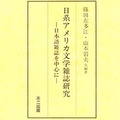>>Part 1
The facility housed a factory that produced camouflage nets for use on the battlefield, and residents were asked to contribute to the war effort, with only citizens allowed to work there. As early as September 1942, the War Relocation Administration was seeking workers to pick cotton. Arizona produced three-quarters of the nation's long-staple cotton, which was essential for wartime defense. Due to the labor shortage during the war, the inmates' labor was desperately needed for the harvest. Many men and women applied, as they could contribute to the war effort and receive wages at the same time, and about 100 at a time were sent off to work.
Loyalty registration took place in February 1943, but there was no noticeable confusion in the Hill Camps. Those who tried to force people to refuse to register were merely warned by the authorities. By the beginning of March, 5,200 men and women between the ages of 17 and 38 had registered. The problems in the Hill Camps were not political, but social problems such as gambling and delinquency among young people. Although these problems existed to varying degrees in all the camps, the lack of serious conflict between those loyal to the United States and those disloyal to the United States in the Hill Camps probably brought social problems into sharper focus.
Starting in the autumn of 1942, there was a commotion at the Yama no Ichi market, with 24 people arrested for gambling. The authorities cracked down on the idea that some people were running gambling halls professionally, luring honest people out of their money. It is said that gamblers were discovered, arrested, and had their heads shaved. Gambling was an inseparable part of prewar Japanese American society. Although the Japanese Association in America and Christian groups began a campaign to eradicate gambling from an early stage, there was a continuous stream of people who lost their lives to gambling, due in part to the fact that immigrant communities were male-dominated societies with few entertainment options. The presence of gambling in the internment camps proves that this trend was brought over.
In March 1943, 101 men volunteered to serve in the camp, but the number of delinquent youths, known as pachucos, also increased. They could not find hope in the camp life, so they formed groups and roamed the camp, starting fights and extorting people. In particular, during this period, they were instantly recognizable by their uniform red hats and red shoes, and their distinctive feather-like hairstyles. In response, parents, who had lost their property, felt that the only hope for Japanese people was to raise a successor, and they could not tolerate delinquent youths who had a negative influence on their precious children, so they formed vigilante groups in each block and tried to prevent their children from becoming delinquents. In the camps, there was no need to cook three meals a day, and there was no need to work unless they wanted to, so the basics of life were destroyed and parents ended up neglecting their children. When children reached a certain age, they ate with friends in the dining hall, mothers ate with people of the same age, and fathers ate with their friends, and families were fragmented everywhere. Family bonding was lost, family relationships gradually fell apart, and it was the worst environment for raising children. Parents made an agreement not to let their children go outside after 9pm every night, and watched over their children's movements in each block. This kind of solution was a uniquely Japanese idea of "neighborhood associations."
After the loyalty registration, the people in the camp were divided into loyalists and disloyalists, and the disloyalists were segregated and sent to Tule Lake. On the other hand, those who volunteered for the military were gradually transferred to enlist. Those who declared their loyalty were able to leave. 1,818 people were sent to Tule Lake in four trips on October 1, 2, 3, and 6, 1943. When these people left, only those who were loyal to the United States remained in Gila. In June 1944, 2,300 people were transferred to the Jerome camp in Arkansas when it was closed. There was no particular turmoil in Gila, and it was a peaceful time. People's attention was turned to finding a place to resettle and good jobs. After Japan surrendered in August 1945, the camp was closed by the end of that month.
*Reprinted from Research on Japanese American Literary Magazines: Focusing on Japanese Language Magazines, co-edited by Shinoda Sae and Yamamoto Iwao (Fuji Publishing, 1998).
© 1998 Fuji Shippan










